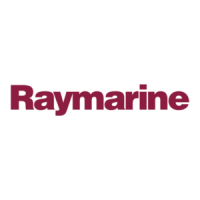Why won't my Raymarine Marine GPS System radar initialize?
- AambermillerSep 14, 2025
If your Raymarine Marine GPS System radar will not initialize and the Voltage control module (VCM) is stuck in “sleep mode”, check the power connection at the VCM. Verify the voltage at the input is 12 / 24 V and the voltage at the output is 40 V.

